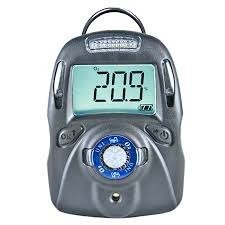In the biogas industry, ensuring safety and operational efficiency is non-negotiable. Portable gas detection systems, such as the Landtec gas analyzer, play a pivotal role in monitoring gas compositions, detecting toxic emissions, and avoiding hazardous incidents. These devices are essential for real-time data collection in environments such as landfills, wastewater plants, and biogas production units.
But here’s the truth: even the most advanced gas analyzers degrade without routine upkeep. Regular maintenance of gas monitoring equipment is not just advisable — it’s critical. It helps prolong the equipment’s life, prevents sensor drift, ensures accurate readings, and keeps your worksite compliant with health and safety norms.
The Importance of Regular Maintenance
Gas analyzers are precision instruments. Like any sensitive equipment, their performance depends on how well they’re maintained. Skipping maintenance can lead to inaccurate readings, safety risks, and unexpected equipment failure.
Here’s why regular maintenance matters:
- Accuracy: Calibration ensures the sensor readings are consistent with known reference gases. This is key to making safe and informed operational decisions.
- Safety: A well-maintained gas analyzer instantly detects harmful levels of gases like methane, carbon dioxide, or hydrogen sulfide — providing early warnings to protect personnel.
- Cost Savings: Proactive maintenance helps avoid costly breakdowns, emergency replacements, and production downtime.
- Compliance: Industries must meet legal standards, and neglected equipment may result in failed audits or penalties.
Additionally, keeping up with maintenance ensures your analyzer meets its design specifications throughout its lifecycle. With so much riding on performance, overlooking these basic steps can lead to long-term consequences, both financially and environmentally.
Best Practices for Maintaining Portable Gas Detection Systems
To maximize lifespan and reliability, incorporate the following best practices into your maintenance schedule:
1. Regular Calibration
Calibration aligns the device’s sensors with certified reference gases. How often you calibrate depends on your application and manufacturer’s guidelines. For example, the GEM5000 Gas Analyzer recommends zeroing before each day’s use and periodic calibration based on your site’s gas composition history.
2. Routine Visual Inspections
Before and after each use, inspect the unit for cracks, dust, water ingress, or damage to cables and screens. Small wear and tear can grow into major failures if ignored.
3. Functional Testing
Perform “bump tests” using a known gas concentration to verify sensor and alarm responsiveness. This confirms the detector reacts properly to actual hazards.
4. Sensor Maintenance and Replacement
Sensor degradation is inevitable over time due to exposure to harsh gases. Periodically assess their performance. Devices from companies like Interscan allow quick sensor swaps using modular cartridges — minimizing downtime.
5. Software and Firmware Updates
Don’t overlook the device’s brain. Many analyzers now offer digital upgrades that improve algorithms, stability, and compatibility. Always check for manufacturer firmware updates to stay current with improvements and bug fixes.
6. Professional Servicing
Schedule annual or bi-annual servicing with certified technicians. They can conduct in-depth diagnostics, factory-level calibration, and component testing that goes beyond on-site checks.
Bonus Tip: Keep a logbook or use digital tracking software for all maintenance activities. This record can prove vital for warranty claims, audits, and identifying recurring performance issues.
Special Focus: Landtec Gas Analyzers (GEM5000 Series)
The Landtec GEM5000 series is designed specifically for landfill and biogas site monitoring. These analyzers measure methane (CH₄), carbon dioxide (CO₂), and oxygen (O₂), along with flow, pressure, and temperature.
To keep your GEM5000 in top form:
- Zero Calibration: Always perform a zero calibration before use to establish an accurate baseline.
- H₂S Filter Check: The hydrogen sulfide filter should be replaced once it turns light gray — a sign of saturation.
- Battery Health: Monitor charge levels and replace the battery if it discharges quickly or fails to hold charge. Poor battery health can result in unexpected shutdowns during critical monitoring.
Conclusion
In fast-paced environments like landfills, biogas plants, and industrial waste sites, portable gas detection systems serve as the first line of defense. But even the best tools are only as good as their upkeep.
Regular maintenance — from calibration and bump tests to sensor checks and firmware updates — ensures your analyzer delivers accurate, timely, and reliable readings. Devices like the Landtec GEM5000 not only safeguard people and infrastructure but also help organizations stay compliant and cost-efficient.












































